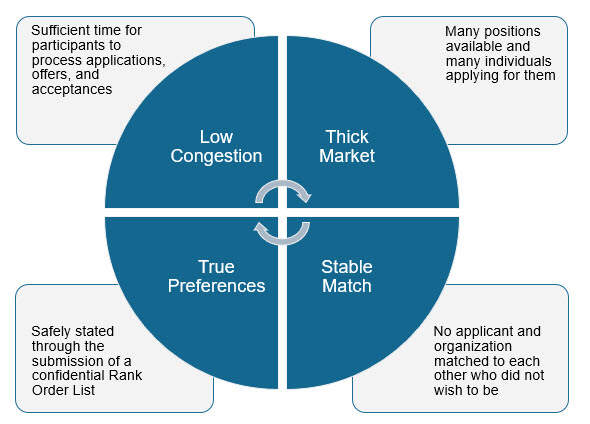Promoting Success in Selection
A Match can help any industry function optimally. Four simple principles of market design, studied heavily in the field of economics, are all that is needed to convey how a Match helps applicants and placement groups achieve the best selection outcomes.
PRINCIPLES OF MARKET DESIGN

- A Match ensures low rather than high “congestion”. When selection decisions encounter high congestion, participants are pressed for time and often make decisions that are not well thought out. A Match ensures low congestion, meaning participants have ample time to submit and review applications, complete interviews, and consider opportunities that work best for them.
- A Match promotes a “thick” rather than “thin” market. With a thick market, there are ample positions and applicants eligible to pursue them. Thickness in a market gives participants multiple options, and that provides the opportunity to identify the opportunities that are the most preferred.
- A Match encourages identification of true preferences. In typical selection situations, applicants or placement groups often make or accept offers because they don’t know if a better, more preferred offer will come along. With a Match, participants can identify their true preferences, in order from most to least preferred, knowing the matching algorithm is designed to help them obtain the most preferred choice possible.
- A Match fosters stability of selection. Because the matching algorithm attempts to place applicants in the most preferred option at an organization that also prefers them, there is no chance an applicant and an organization will be matched if they did not mutually desire each other or that an applicant will be placed in a position not wanted or ranked. For that reason, participants are unlikely to obtain a better position outside the Match than the one identified for them by the matching algorithm.